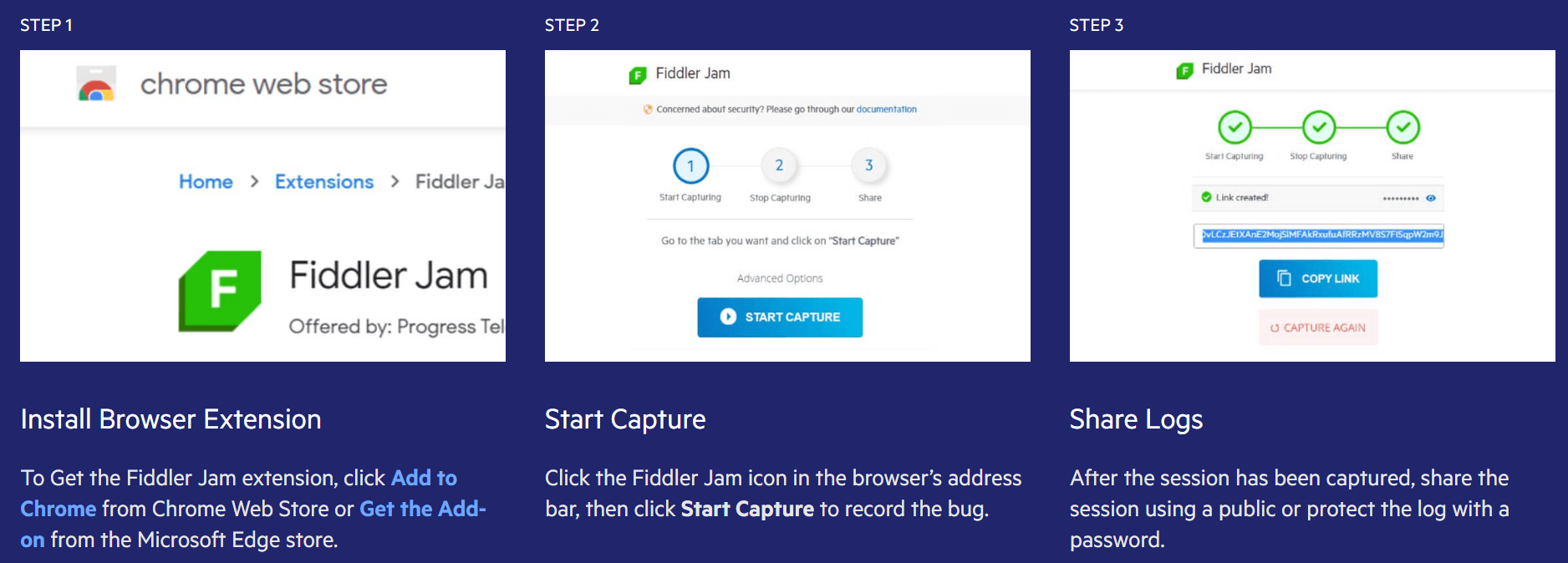Everything You Need To Know To Deliver High-Quality Bug Reports

Did you know that not all bug reports are created equal? Explore bug reporting approaches, what help tools should provide, and the do’s and don’ts to deliver quality reports while saving time.
What Is a Bug Report?
What are the key elements of a strong bug report? If you are in a support role, it is likely you are tasked with bug reporting. Yet did you know that not all bug reports are created equal? To ensure you deliver a high level of detail in your bug report without any missing steps, while at the same time offering exceptional customer service, you need the right guide and tool for the job.
When looking for solutions to help you create bug reports, pay attention to how easy it is to capture bugs, how elegantly bug report logs are created, how effortless it is to further inspect them for resolution, and how streamlined the approach is to deliver successful outcomes. Each of these plays an important role in your success and influences your overall customer satisfaction.
The Purpose of a Bug Report
Let’s cover what a bug report is and its purpose. Bug reports are where support engineers and developers outline errors and end-user encounters. It includes the steps to reproduce this issue, details on the troubleshooting effort, and specific documentation on how to resolve it.
Here is an example: You are a support team member supporting end users who in this case are teachers using an e-education platform. You are contacted because the teacher is unable to upload her class syllabus to her portal and is becoming frustrated because the students are depending on this class content to be available by the end of the day. In this bug report scenario, you need the ability to record the issues, then replicate them step by step, and then offer the end user a resolution.
It is imperative no details are overlooked in the bug report—you will need to include a video, screenshots, network traffic, page clicks, capture details, and user actions such as click, input and scroll.
How To Read Bug Reports—Do’s and Don’ts
Now that you have reproduced and captured the issue, the reporting begins. Each bug report offers valuable feedback from end clients that opens opportunities to improve both the product and its reputation with existing users (who are reporting the bugs).
Bug reports can be exhaustive, and being able to successfully read a bug report may require a bit of guidance. When reading about a reported bug, here are the important considerations:
- Read and reread the bug report. Understand as much as possible from the initial report and, if possible, test the case.
- Always (or almost always) require clarification within the bug report. Sometimes bugs are missing features which can be communicated with the clients.
- When the issue is considered a bug, it should be presented to the developer’s team as soon as possible. Depending on the bugs severity, it can be escalated immediately or added to a regular triage list. Never ignore a bug listed in a bug report no matter how small of an impact it has.
- Report back your findings and plans for fixing the bug to the client. By corresponding with thanks for the feedback, you are opening the dialog for valuable insight. Good things can come from negative feedback too—it is how you view it.
- Save the whole conversation regarding the bug report for future analysis and reusage.
The Technical Flow of a Bug Report
When it comes to setting the fundamentals of your technical workflow, here is an eight-step bug report walk-through that is pain-free and sets you up for success.
Step 1. The bug report is received and taken by the support engineer
Step 2. The TSE (tech support engineer) reads the report, considers all shared details, and tries to verify if it is a bug by comprehensive testing (when possible).
Step 3. If not enough information is shared by the client or the issue is not reproducible, the TSE should ask the client for more details. That can include additional technical details (environment specifics, versions, steps to reproduce and even a sample project)
Step 4. Once enough information is received, the TSE decides if the issue is a bug, FR (feature request) or other (how-to). Bugs are then reported to the team through the used tracking system (Jira, GitHub, etc.).
Step 6. Based on the estimated bug severity, it is escalated or added in the backlog for future planning.
Step 7. The customer (who reported the bug) is informed on the status. When possible, a temporary solution or workaround is provided. For critical bugs, the customer is provided an approximate date when the fix is expected (and the user is contacted once more when the fix is live).
Step 8. Once the bug is fixed, the fix is included in the release notes of the new product version.
Bug Reporting Approaches and Bug Reporting Tools
While this sounds tedious, knowing these considerations is key to finding the right bug report solution. With bug reporting solutions, these tasks are streamlined, and a straightforward approach saves you time pre- and post-resolution, not to mention your response and ticket close times are put into overdrive. Here is what to look for when investigating bug reporting tools. How easy is it to:
- Capture network session details with only a few clicks to ensure your bug report includes every detail.
- Allow your end users a self-service way to submit issues to you and your team securely receive them.
- Utilize a workspace to inspect logs, explore capture details and collaborate with your team on the bug reports you are working on.
Now that you have more information on the concept, the benefits and what to look for, let’s explore how you go about actually capturing all these details for a bug report. For this walk-through, I am going to be using Fiddler Jam as my bug report solution. Fiddler Jam offers a solution-based bug report approach that provides end users with a self-service way to record their network activity and securely pass it along to the support team who can further inspect and troubleshoot the issue within Fiddler Jam’s portal.
Here is how an end user can use the Fiddler Jam extension to record and share logs. After adding the Fiddler Jam Chrome extension from the store, the user clicks on the Fiddler Jam icon from the browser’s address bar and then clicks Start Capture to start recording bug details. After they have captured the bug, the end user gets a link that can be password-protected to share with support personnel.
Bug Reports Summarized
To take the guesswork out of bug reporting and deliver high-quality bug reports that help fix issues, it is worth your time and effort to invest in determining what that process could be within your company. Your support team is no longer a cost center—it is a customer-centric environment that plays a key role in the overall success of your company.
Many times, you believe there must be a better way, even if you may not know exactly what that is. Reading this article was a big first step. You are well on your way, yet do not stop here. The biggest failure is not trying, and you have a solid foundation to explore bug reporting with a fresh perspective.
Fiddler Jam is an all-in-one tool that collects bug details to help you resolve issues faster and more efficiently while delighting your end-users. You can try it now for free for 14 days.

Eve Turzillo
Eve is a senior developer advocate at Progress and is enthralled in everything to do with web debugging and the world of network traffic. When not writing content or streaming, you can find her at your favorite developer events.


